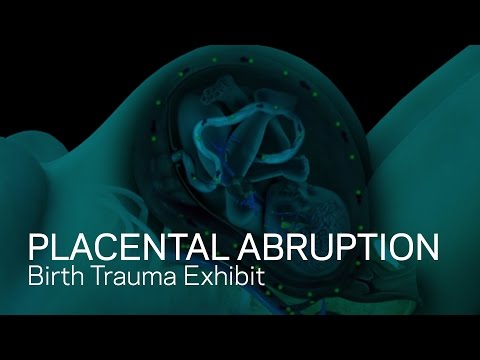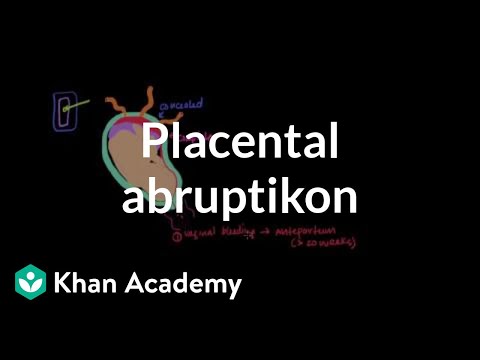As we dive into the serious yet crucial topic of placenta abruption, we need to be clear about one thing—knowledge is power. Placenta abruption can sound daunting, but understanding what it is and how it affects pregnancy can empower expectant mothers. It occurs when the placenta detaches from the uterus before delivery, and it can pose significant risks to both mom and baby. Let’s break down the facts, symptoms, and management strategies associated with this condition.

7 Key Facts About Placenta Abruption and Its Impact on Pregnancy
1. Definition and Mechanism
So, what exactly is placenta abruption? This condition happens when the placenta separates from the uterine wall before the baby is born. This separation can lead to heavy bleeding that may endanger both the mother and the baby. Understanding this mechanism helps in early identification, and knowing when to seek medical assistance is key.
2. Significant Risks Involved
The dangers of placenta abruption are severe. The major risks include heavy bleeding (hemorrhage), preterm birth, and even stillbirth. Research indicates that around 1% of pregnancies deal with significant cases of placenta abruption. That percentage may be small, but it emphasizes the necessity of awareness among expectant mothers and healthcare providers alike.
3. Symptoms to Watch For
What should you be on the lookout for? Signs of placenta abruption include sudden abdominal pain, noticeable vaginal bleeding, and frequent contractions. In some cases, the fetal heartbeat can also be compromised, which calls for immediate medical intervention. Being aware of these symptoms can save lives.
4. Factors Contributing to Abruption
Several factors can increase the risk of experiencing placenta abruption. A history of prior abruption, high blood pressure, substance abuse, or even trauma to the abdomen can all contribute. Interestingly, studies suggest that pregnancies involving an anterior placenta may present unique risk profiles compared to those with a posterior placenta, influencing how the detachment occurs.
5. The Role of Lifestyle Choices
Your lifestyle choices play a huge role too. Habits like smoking or using illicit drugs—especially cocaine—can significantly raise the risk of having a placenta abruption. It’s essential for pregnant women to be aware of these risks and prioritize healthier choices, contributing to a safer pregnancy.
6. Diagnosis and Monitoring Techniques
So, how do healthcare providers diagnose this condition? They often use ultrasound imaging to get a visual assessment of the placenta’s position, whether it’s anterior or posterior. Although this method isn’t always definitive, it offers insights that are crucial for effective management.
7. Treatment and Management Strategies
Treatment for placenta abruption can vary significantly based on the severity of the situation and how far along the pregnancy is. Options range from observation and bed rest to emergency delivery if either the mother’s or the baby’s health is at risk. Anterior placenta cases may have different management guidelines compared to those with a posterior placenta, stressing the need for tailored healthcare.

How Placenta Positioning Affects Abruption Risks and Outcomes
It’s amazing how something like the positioning of the placenta can influence outcomes during pregnancy. While both anterior and posterior placentas can experience abruption, their locations can change how symptoms present themselves and what management strategies are effective. Research has shown that anterior placentas might be linked to a higher chance of complications. This positioning can obscure certain symptoms, making them harder to identify.
Anterior Placenta
When the placenta attaches to the front side of the uterus (anterior placenta), it may cover parts of the cervix. This can lead to increased risks of bleeding when it detaches, heightening the need for close monitoring. If you find out you have an anterior placenta, stay vigilant and regularly consult your healthcare provider for any changes.
Posterior Placenta
On the flip side, a posterior placenta usually allows for a clearer view of symptoms associated with abruption. It makes monitoring easier for healthcare professionals. Still, don’t let that give a false sense of security—risks are still present, and constant vigilance is key to a healthy pregnancy.

The Broader Implications of Placenta Abruption Safety Measures
Ensuring the safety of both mother and baby means taking proactive steps and continuous education. During prenatal care, detecting potential issues early is vital. Participating in programs and workshops that focus on awareness of symptoms and risks can lead to improved communication between patients and their healthcare providers.
A Case for Innovation in Care
Use technology to your advantage! Advances like wearable fetal monitoring devices and telehealth options help to recognize early signs of complications. This modern approach can allow timely interventions, which is crucial for maternal and fetal health.

Final Thoughts: Empowerment Through Knowledge
To wrap it all up, knowing about placenta abruption—including its causes, symptoms, and the role of placental positioning—is crucial for expectant parents. This understanding empowers pregnant women to take charge of their care and communicate effectively with their healthcare providers. By keeping informed, we can potentially reduce risks associated with this condition, leading to safer pregnancies and happier, healthier outcomes for everyone involved.
So, whether you’re lifting weights or navigating the challenges of parenthood, remember that knowledge equips you for the journey. Keep pressing on, stay informed, and you’ll be well on your way to championing both your health and that of your little one. And who knows? In the world of parenting and fitness, being shredded isn’t just about your muscles but also about having the right information to help you thrive. So, let’s get after it!

Placenta Abruption: Causes, Risks, Symptoms Explained
Understanding Placenta Abruption
Did you know that placenta abruption, while a rare condition, can have serious implications for both mother and baby? It occurs when the placenta detaches from the uterus before delivery, often leading to complications. What’s fascinating is that the exact causes can sometimes be a bit elusive. Factors such as high blood pressure, trauma, or even smoking can increase the risk. Speaking of smoking, it’s interesting to note that there are also health issues related to grooming, like the problem of ingrown pubic hair, which often comes from improper hair removal techniques. Understanding the signs and symptoms early can make a big difference, just like knowing how to approach a conversation about love language meaning can improve relationships.
The Chilling Statistics
While it’s essential to focus on the medical aspects, the statistics surrounding placenta abruption can send chills down anyone’s spine. For instance, it affects about 1 in 100 pregnancies. That’s a small number, but it can go up for women with certain risk factors. Fun fact: just like how the fascinating cast of Furiosa in the upcoming Mad Max saga brings a unique flair to storytelling, the impact of this condition can tell compelling stories of resilience when mothers rally through their challenges. It’s crucial to recognize the symptoms, which can include sudden abdominal pain, vaginal bleeding, and decreased fetal movement, as they require immediate medical attention.
Support and Recovery
Apart from the risks and symptoms, support systems play a critical role. Recuperating from placenta abruption can be tough, but with the right help, many women bounce back. On a lighter note, while you’re contemplating the journey of motherhood, you might also wonder about the net worth of famous explorers like Hamish Harding, who showcases the adventurous side of human spirit—often not so different from the journey of pregnancy itself. Just remember, whether it’s in your health journey or exploring new territories, having a trusted network, much like the Wisconsin volleyball team Twitter community for their support, can make all the difference. Ultimately, being informed and prepared paves the way for a smoother experience during pregnancy and motherhood.



























